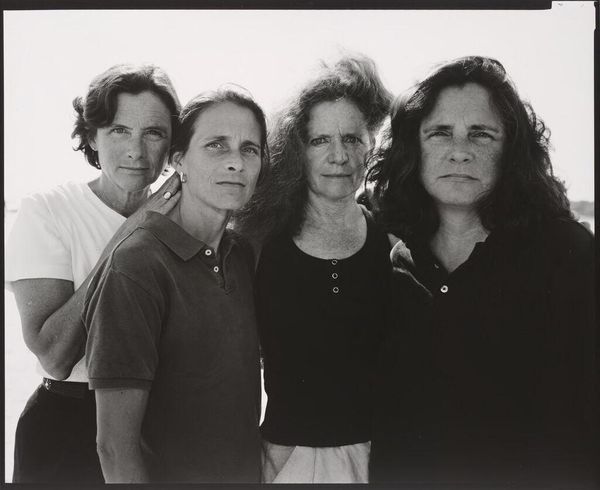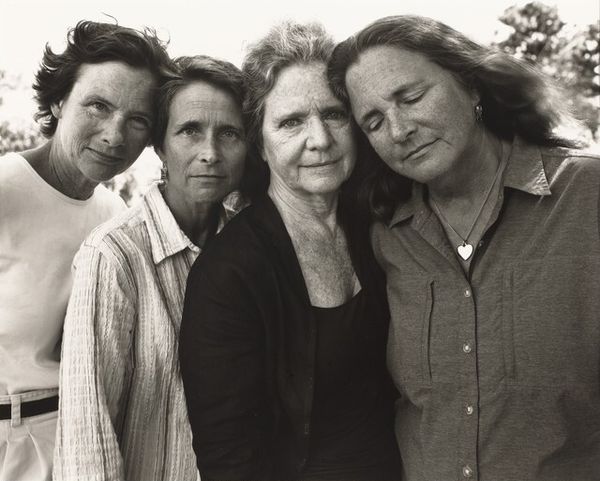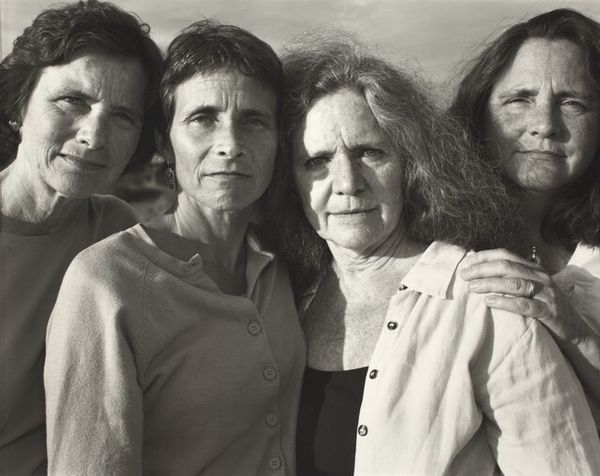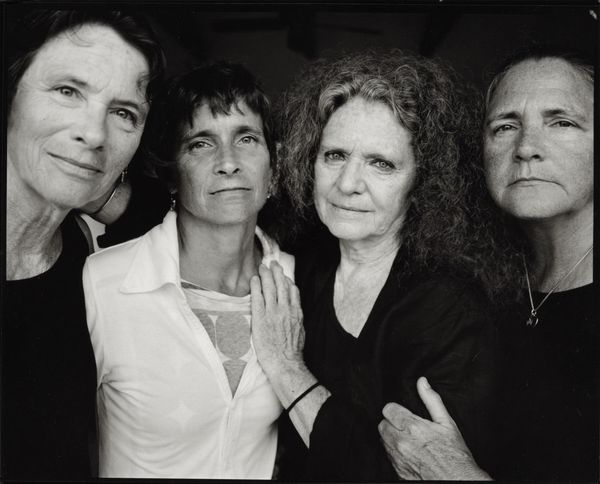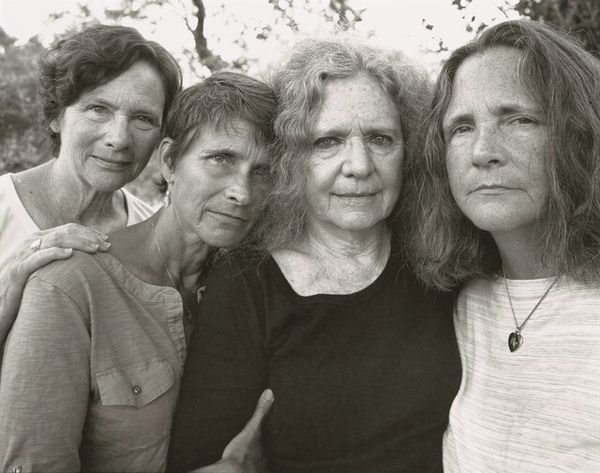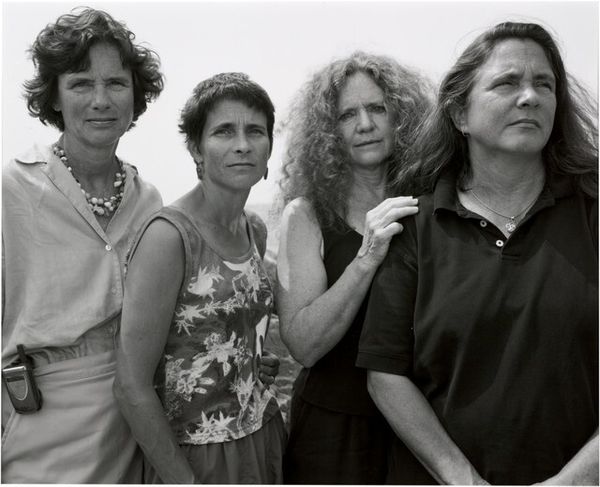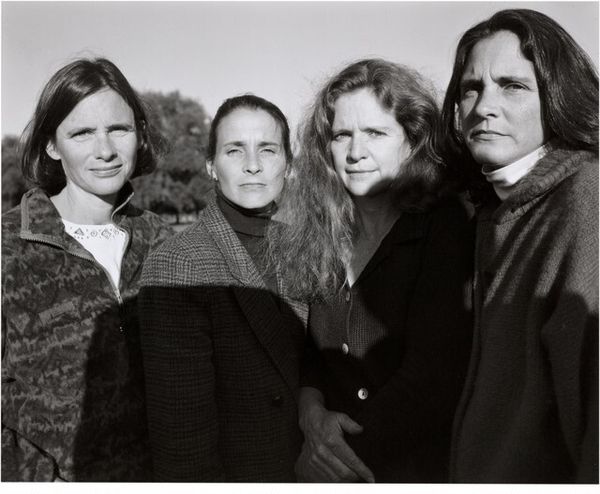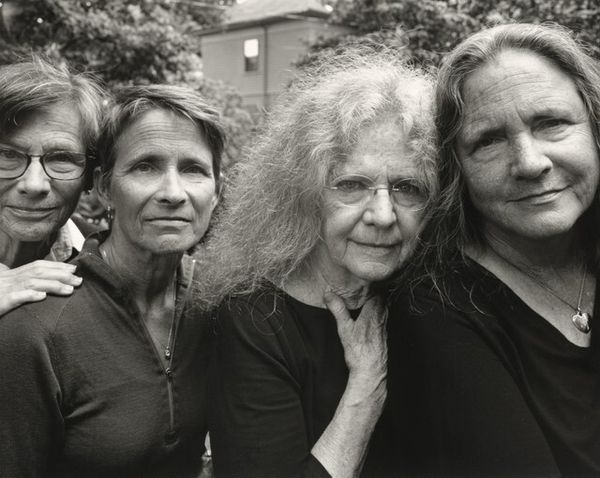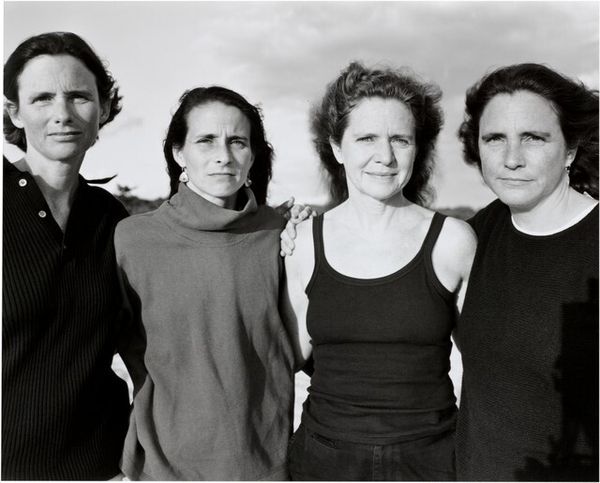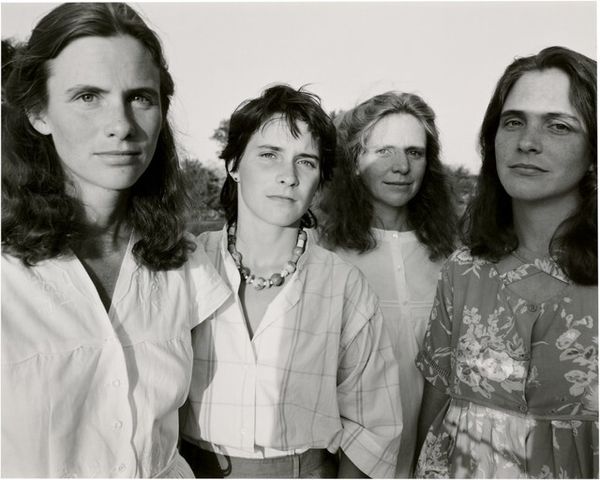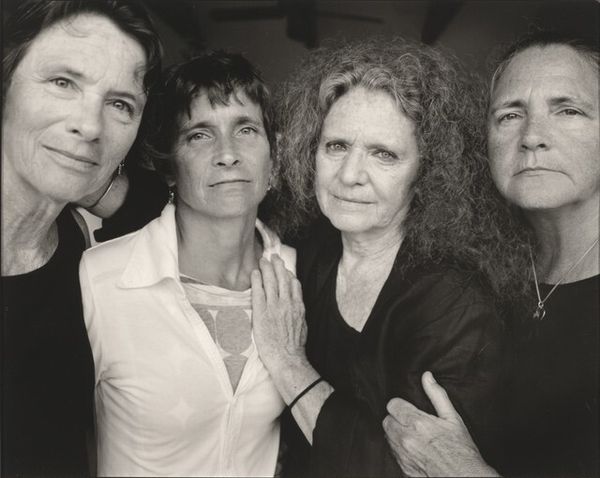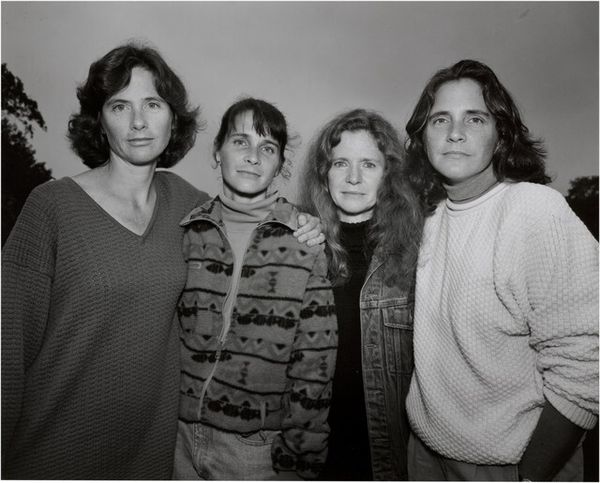
photography, gelatin-silver-print
#
portrait
#
contemporary
#
film photography
#
photography
#
gelatin-silver-print
#
monochrome photography
#
portrait photography
#
monochrome
Dimensions: overall: 20.3 x 25.4 cm (8 x 10 in.)
Copyright: National Gallery of Art: CC0 1.0
Curator: Looking at Nicholas Nixon’s "The Brown Sisters, Ipswich, Massachusetts" from 2003, it’s remarkable how he continues this series using the gelatin-silver print. The unwavering format and the dedication over time have certainly elevated the piece's significance. Editor: My initial reaction is one of melancholy. The monochrome really emphasizes their expressions. Their eyes carry decades of shared history, you know? There’s something raw and unflinching about the unflattering lighting. It's very intense. Curator: Precisely. By repeating the composition annually for over four decades, Nixon provides a poignant commentary on aging, familial bonds, and the passage of time within the frame of social constructs. Consider the historical tradition of portraiture; the ways the gaze has shifted from aristocratic authority to quiet vulnerability are evident here. Editor: I agree; this annual act borders on ritualistic, lending a deep symbolism to it. Each photograph serves as a memento mori, and each one resonates differently. What does the evolving presentation mean over time? You can almost see, mirrored in the subjects, your own mortality, your own impermanence. I wonder if people would have related to this level of exposure several generations before? Curator: I wonder if Nixon intends the ordinariness of the photographic medium to suggest the unrelenting progression of time? Its mechanical nature amplifies, perhaps even subverts, our culture's fixation on aesthetics. Instead, he directs us to witness life in real time. In terms of artistic merit and broader influence, these portraits redefined documentary photography. The work makes you realize how important visual history and documentation can be. Editor: Yes. Seeing the subtle shifts, the quiet changes in appearance—each line and crease tells a story of lived experience and transformation. It prompts contemplation about universal human themes. This one feels more direct, the sisters more vulnerable, perhaps. They face forward, unflinching in their gaze. Their very ordinariness challenges societal norms of beauty. Curator: It's a visual testament to duration. A profound statement. Editor: Indeed. The series’ visual chronicle resonates profoundly.
Comments
No comments
Be the first to comment and join the conversation on the ultimate creative platform.
